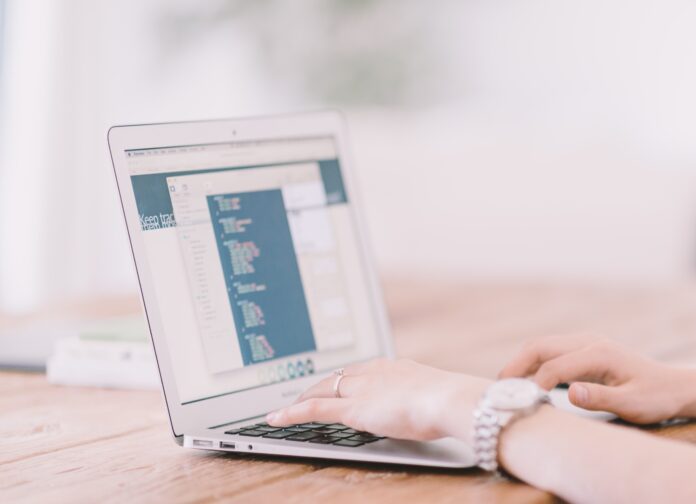Trackpad is a crucial input device commonly found on laptops and other portable computing devices. It serves as a substitute for a traditional computer mouse, allowing users to control the cursor and interact with the graphical user interface (GUI) through touch-based gestures. The trackpad, also known as a touchpad, is a sensitive surface that responds to the pressure and movement of a user’s fingers, enabling them to navigate through various applications, perform actions, and execute commands. In this response, I will provide you with a concise list of ten important things you need to know about trackpads.
1. Functionality: The primary purpose of a trackpad is to provide a convenient and efficient means of controlling the cursor on a computer screen without the need for an external mouse. Users can move their fingers across the trackpad’s surface, translating the movement into cursor motion on the display.
2. Gestures: Trackpads support a range of multi-touch gestures that enhance the user experience and provide additional functionalities. These gestures include tapping, scrolling, swiping, pinching, and rotating, among others. Different gestures can trigger specific actions such as zooming, rotating images, or accessing contextual menus.
3. Design and Positioning: Trackpads are typically integrated directly into the laptop’s palm rest area, situated below the keyboard. The design and size of trackpads can vary, but most modern trackpads offer a smooth and responsive surface that accommodates a wide range of gestures.
4. Physical and Virtual Buttons: Some trackpads include physical buttons at the bottom, which can be pressed for a traditional “click” action. However, many modern trackpads have replaced physical buttons with a clickable surface, known as a “buttonless” or “clickpad” design. These trackpads provide haptic feedback to simulate the feeling of pressing a button without the need for a physical mechanism.
5. Sensitivity and Customization: Trackpads offer adjustable sensitivity settings, allowing users to modify the responsiveness of the device to match their preferences. Additionally, trackpad settings often provide customization options for gesture assignments, enabling users to personalize their experience and optimize productivity.
6. Compatibility: Trackpads are predominantly associated with laptops, but they can also be found on other devices such as all-in-one computers, ultrabooks, and some external keyboards. Additionally, certain operating systems like macOS and Windows have built-in support for trackpad functionalities, while others may require additional drivers or software.
7. Palm Rejection: To prevent accidental inputs and unintended cursor movements, trackpads often incorporate palm rejection technology. This technology can distinguish between intentional touch gestures made by fingers and inadvertent contact from the palm or wrist, thereby ensuring accurate and reliable tracking.
8. Accessibility Features: Trackpads are inclusive input devices that cater to a wide range of users. They offer various accessibility features, such as adjustable cursor speed, dwell-clicking (where the cursor automatically clicks after a certain period of inactivity), and assistive touch options for individuals with limited dexterity.
9. Integration with Additional Input Devices: While trackpads are designed to replace traditional computer mice, they can also work in conjunction with external mice. This integration allows users to choose the input device that best suits their needs or switch between them based on personal preferences or tasks.
10. Advancements and Future Developments: Trackpad technology continues to evolve, with ongoing advancements aimed at improving precision, responsiveness, and the range of supported gestures. For example, force touch or pressure-sensitive trackpads can detect varying levels of pressure, enabling users to access additional contextual menus or perform different actions based on the applied force.
One of the key features of trackpads is the support for multi-touch gestures. Users can perform various actions such as tapping, scrolling, swiping, pinching, and rotating using different combinations of finger movements on the trackpad’s surface. These gestures enhance the user experience and provide quick access to commonly used functions. For example, a two-finger scroll gesture allows for smooth scrolling through web pages or documents, while a three-finger swipe can switch between open applications or reveal the desktop.
Trackpads offer customizable settings to adjust sensitivity and gesture assignments. Users can modify the trackpad’s sensitivity to suit their preference, making it more or less responsive to finger movements. Additionally, customization options enable users to assign specific actions or shortcuts to different gestures, empowering them to personalize their workflow and increase productivity.
Trackpad compatibility varies across devices and operating systems. While trackpads are commonly associated with laptops, they can also be found on all-in-one computers, ultrabooks, and some external keyboards. Major operating systems such as macOS and Windows have built-in support for trackpad functionalities, ensuring seamless integration and access to advanced features. However, it’s worth noting that some operating systems may require additional drivers or software for full trackpad functionality.
Palm rejection technology is an important feature found in trackpads. It distinguishes between intentional finger gestures and inadvertent palm or wrist contact, preventing accidental inputs and ensuring accurate cursor tracking. This technology enhances the overall user experience by minimizing errors caused by unintended touches, particularly during moments of rest or while typing.
Trackpads are designed with accessibility in mind, providing features that cater to a diverse range of users. Adjustable cursor speed accommodates individuals with different motor skills, allowing them to control the cursor at their preferred pace. Dwell-clicking is another accessibility feature, enabling users with limited dexterity to perform a click action by hovering the cursor over an item for a specific period of time. These accessibility options make trackpads inclusive and user-friendly for individuals with varying needs and abilities.
While trackpads serve as primary input devices, they can also seamlessly integrate with external mice. This integration allows users to choose the input device that best suits their tasks or personal preferences. For example, some users may prefer using an external mouse for tasks that require high precision, while relying on the trackpad for general navigation and gestures. The ability to switch between input devices provides flexibility and caters to individual working styles.
Trackpad technology continues to advance, with ongoing developments aimed at improving precision, responsiveness, and the range of supported gestures. Force touch or pressure-sensitive trackpads are a notable advancement, capable of detecting varying levels of pressure applied by the fingers. This technology opens up new possibilities, such as accessing contextual menus or performing different actions based on the force exerted on the trackpad’s surface. As technology progresses, we can expect further innovations in trackpad design and functionality.
Trackpads are essential input devices that provide users with an alternative to traditional computer mice. They offer precise cursor control, support a wide range of gestures, and can be customized to meet individual preferences. With features like palm rejection, accessibility options, and integration with external mice, trackpads cater to diverse user needs. As technology evolves, trackpad advancements continue to enhance the user experience, making them an integral part of modern computing.
In conclusion, trackpads are integral input devices that offer a touch-based alternative to traditional computer mice. They provide users with precise cursor control, support a wide range of gestures, and can be customized to suit individual preferences. The design and positioning of trackpads are typically integrated into the palm rest area of laptops, conveniently located below the keyboard for easy access. Some trackpads include physical buttons for clicking, while others adopt a buttonless design with a clickable surface.






















